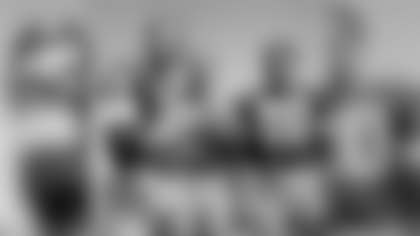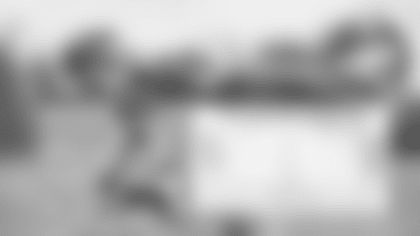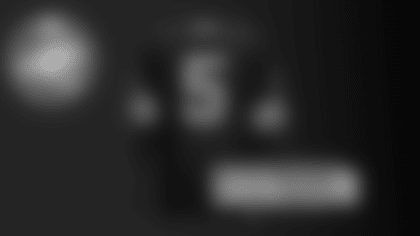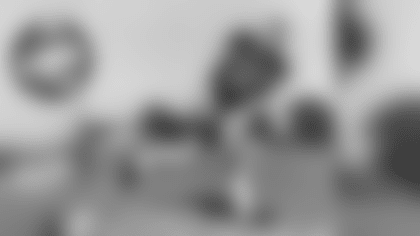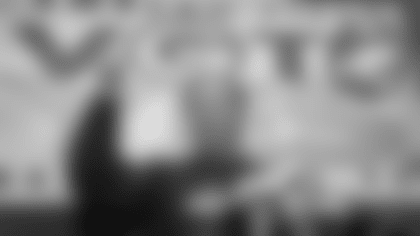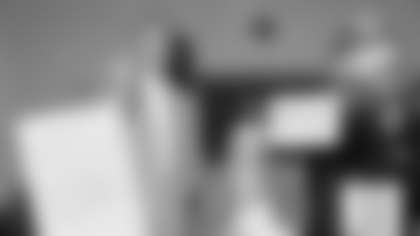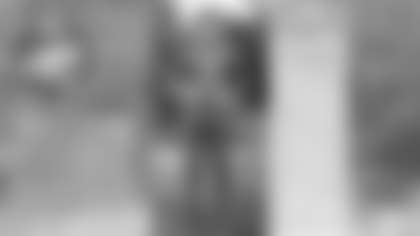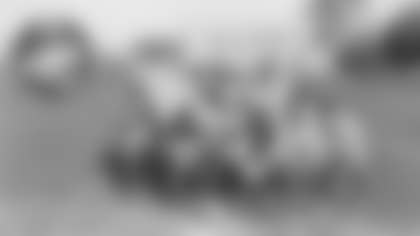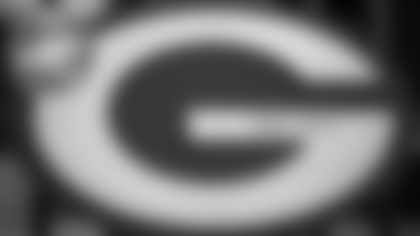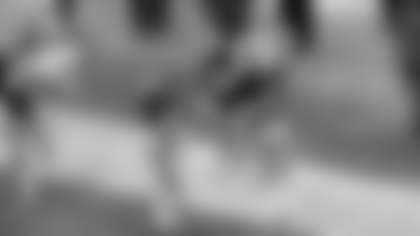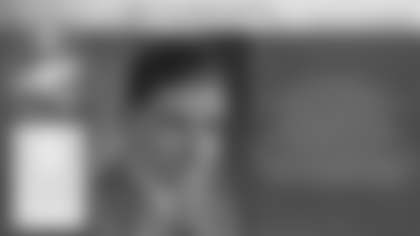Mike from Lena, WI
New 600-page tome/book on Curly Lambeau has been released by Herb Gould. Have you received, reviewed and read? Your thoughts?
I received Gould's rough draft and told him I would fact check it for him and point out inaccuracies. I had done the same for Kris Leonhardt's book on Lambeau. I did not edit either book; I only suggested changes for the sake of accuracy.
Gould is a gifted writer who had a long career at the Chicago Sun-Times. He has been writing features lately on the Door County Baseball League for the Door County Pulse that have an easy flow to them and would make for a good book in my mind.
As for his Lambeau book, I think I reviewed about a third of it and stopped after it took me seven hours one Sunday to read and suggest corrections on a single chapter. Basically, it was because he relied heavily on unsourced books that had muddled and, in some cases, butchered Packers history.
As a result, Gould's rough draft read more like a Lambeau mythology to me than an historical account of his 31-year association with the Packers.
For example, there was little or almost nothing in the book about what I believe was Lambeau's greatest strength as a coach: Constantly adapting his Notre Dame system to the talents of his players from the 1920s into the early 1940s, or until the game started to pass him by. There also was very little about Lambeau's role in league matters, which could have been easily researched in the NFL meeting minutes. Lambeau was a prominent voice in the room.
In the end, I don't know what suggestions of mine Gould accepted, and I didn't read the last two-thirds or so of his draft. Thus, I don't know what's in the final version. Maybe it's more accurate than the text I reviewed.
That said, there's no pro football historian who has done more extensive research than David Neft. And he has told me that no newspaper covered the NFL in its early years more extensively than the Green Bay Press-Gazette.
Thus, as I reviewed Gould's text, I felt like I was committing a sacrilege and betraying the legacies of former Press-Gazette writers Val Schneider, George Whitney Calhoun, John Walter and Art Daley.
As far as I recall, they were never cited as sources by Gould. Instead, there were numerous citations credited to authors who had done virtually no serious research and had littered their Packers books and stories with falsehoods and conspiracy theories.
They lacked credibility, while the Press-Gazette writers listed above were all eyewitnesses to Packers history and covered Lambeau on a nearly everyday basis.
Schneider wrote about the Packers in 1919. Calhoun resumed writing sports in 1921 and covered the Packers regularly until 1927. Thereafter, he continued writing about them in different capacities into the 1930s and even beyond. Walter covered the Packers from 1935-41; and Daley took over the beat in 1942, went into the service and resumed covering the team in 1946.
Arthur Bystrom was hired as sports editor of the Press-Gazette in 1928 and covered the Packers through the 1934 season before spending more than 30 years working for the Associated Press. He, too, was a good journalist. However, he was a native of Chicago and wasn't as well versed as the others on early Packers and Green Bay history.
My suggestion to anyone wanting to learn more about Lambeau would be to subscribe to newspapers.com and read the thorough coverage of those detailed-minded local writers.
Yes, they always found a silver lining in the Packers' bad times and there were controversies and other issues they could have dug into deeper. But you could find most of that content by taking out a subscription to NewsBank and reading Oliver Kuechle in The Milwaukee Journal and Stoney McGlynn in the Milwaukee Sentinel.
Especially McGlynn.
He was captain and starting right tackle in 1922 for what was then Lawrence College. His teammates included future Packers halfback and NFL pioneer scout Eddie Kotal, future Packers head coach Lisle Blackbourn and Myrt Basing, the Packers' starting left halfback in 1923 and '24.
McGlynn joined the Sentinel in 1927, was writing about the Packers by 1930 and continued doing so through 1945. He was way ahead of his time in terms of writing about football strategy and analyzing players' strengths and weaknesses.
His writings have been by far the most insightful I've found about Lambeau's coaching and his players.
Calhoun also provided a treasure trove of insight into the Packers in his extensive notes and player profiles in the Packers' publicity booklets, starting in 1930. Those equivalents of today's media guide are hard to find and outrageously expensive on sites like eBay.
But back in the 1970s, Joe Cronin, a sports memorabilia collector who worked for the U.S. Weather Bureau at what was then Austin Straubel Field, produced reproductions of many, if not all, of those 1930s and '40s booklets. And those repos can sometimes be purchased at a reasonable price.
In conclusion, I couldn't imagine writing a book about Lambeau without exhaustively researching those Press-Gazette writers, McGlynn, Calhoun's publicity booklets and NFL minutes from 1921-49.
The history you'll find there is much different than the one I read as I was reviewing chapters of Gould's book. But I'll repeat: Presumably that was not the final version.
Ron from Broken Arrow, OK
In looking at the Packers' media guide under the listing of all-time players, I noticed that Joe Francis was listed as a "B," which I took to mean "back." However, it is my understanding that Francis played quarterback during the 1958 and '59 seasons and started one game in 1958. In addition to quarterback did Francis play another position in the backfield? If not, why does the media guide not reflect that he was a quarterback? Thanks for all you do as team historian.
Thanks for being a loyal reader and serving as a watch dog. You're right. Francis played only quarterback with the Packers as far as I know and should be listed as one.
With Scooter McLean overseeing the second phase of the 1958 draft following the firing of Lisle Blackbourn, the Packers selected Francis in the fifth round. A native of Hawaii, he had played tailback in a single-wing offense at Oregon State. At the same time that was during the one-platoon era of college football, so Francis doubled as a defensive back.
Although it was in a losing cause against Iowa, Francis' most memorable college game was the Rose Bowl at the end of his junior season. He completed 10 of 12 passes for 130 yards and rushed for a team-high 73 yards on 15 carries.
After his senior year, Francis practiced as a T-formation quarterback in preparation for the East-West Shrine Game but played sparingly. Earl Klapstein, an assistant coach under Blackbourn in 1956, was the one who scouted and recommended Francis to the Packers. "The best back on the West Coast," said Klapstein, who had taken a head coaching job at a California Junior College.
Francis was 6-foot-1 and weighed 195 pounds.
Oddly, he is listed in our media guide as a QB in the 1958 draft list, where just listing him as a "B," probably would be more fitting. When Francis was drafted, McLean said that he'd get a look at quarterback, halfback and defensive back.
At the start of his first camp, Francis worked at both quarterback and cornerback, but caught the attention of the coaches on offense when he looked the best of the Packers' four QBs in the first scrimmage. The other three were veterans Babe Parilli and Bart Starr, and seventh-round pick Doug Maison of Hillsdale College.
Shortly thereafter, Francis had another impressive showing in the annual Intra-Squad Game played in what is now Lambeau Field before a crowd of 9,381. After throwing an interception on his first pass, he completed 8 of 9, including one for 30 yards and a touchdown.
When Maison was cut after the first exhibition game that left three quarterbacks on the roster, although Francis continued to see practice time on both sides of the ball.
In the third of five exhibition games, Francis was given his first real test and completed 2 of 3 passes for 42 yards and a touchdown. Three weeks later on the final cutdown to 35, he made the team as the third quarterback but then hardly played. He attempted only six passes prior to the ninth game, when he threw six more in the waning minutes of a 33-12 loss to San Francisco.
Two weeks later, in another loss to the 49ers, Francis completed 4 of 6 passes for 51 yards and the game's final touchdown in mop-up duty of a game that ended 48-21.
That earned him his only career start a week later in the season finale against the Los Angeles Rams. In a 34-20 defeat that left the Packers with a 1-10-1 record, Francis was a rare bright spot. He completed 7 of 13 passes for 84 yards with one touchdown covering 50 yards and one interception. He also rushed for 87 yards on 11 carries.
In both of the last two games, the Packers ran plays from a double-wing spread where Francis took deep snaps much like a single-wing tailback or a shotgun quarterback today. But so did Parilli from what I was able to gather.
In 1959, Vince Lombardi took over as Packers coach and traded for veteran quarterback Lamar McHan to compete with Starr, Parilli and Francis for the starting job. As it turned out, Francis was the surprise of training camp and started the final exhibition game. In fact, he was the only one in the group to complete 50 percent of his passes. He was 13 of 26 for 241 yards in his preseason appearances.
In the end, Parilli was cut and McHan started the opener.
Flash forward to the sixth game and when McHan was struggling because of an injury to his right shoulder, it was Francis – not Starr – who replaced him in the second quarter. On Francis' first series, Paul Hornung capped the drive with a field goal for the Packers' only points in a 20-3 loss. Francis finished with five completions in 18 attempts for 91 yards.
A week later, McHan left the game again in the second quarter and this time, Starr replaced him. Francis never threw another pass for the Packers.
In 1960, he was moved to halfback, broke his leg in early August and missed the entire season. Fully recovered from his injury, Francis was upbeat when he reported to Lombardi's "Quarterback School" in June 1961. McHan had been traded during the offseason and that meant Francis would enter training camp as the No. 2 quarterback.
On Aug. 8, after Francis suffered a knee injury in the annual Intra-Squad Game, Lombardi traded for veteran quarterback John Roach. Eight days later, Francis was waived. He signed with Montreal of the Canadian Football League and played in nine games over two seasons.
Adam from Great Meadows, NJ
In "When Pride Still Matters," it was noted that when Lombardi was at St. Cecilia's he "took his boys to Hackettstown, N.J., for a two-week training camp and installed a new offense, merging the Notre Dame Box with a version of the T-formation." I'm a graduate of Hackettstown High School. I had never heard that story and posted it on a local message board. I got a response from someone who said, "Vince Lombardi and Chot Morrison, Hackettstown's coach, were good friends, and, yes, their teams worked out together." Bill Dougherty Sr. of the Central House Bar talked about them stopping there to "chew the fat." I was wondering if you have any knowledge or have done any research about Lombardi visiting Hackettstown?
I like the question and your interest in your hometown's high school football history.
Before the 1946 season, Lombardi's last as head coach at St. Cecilia, he took his team of 44 players to St. Joseph's Villa in or near Hackettstown for at least five days of two-a-days. Prior to the 1943 and '44 seasons, Lombardi's St. Cecilia teams held preseason camps at Culver Lake, near Newton, N.J.
I found that information in the Newark Star-Ledger and the Hackensack Record from those years. In 1943, Pope Pius High School in Passaic, N.J., accompanied St. Cecilia to Culver Lake. I didn't find any mention of Lombardi's team practicing against Hackettstown, but I wouldn't be surprised if it did.
And whether it did or didn't, I'd bet you a Central House beer that Lombardi and Morrison found time "to chew the fat" together there. Morrison was about 10 years older than Lombardi and started coaching about a decade earlier. He wound up coaching at Hackettstown, as you may well know, from 1929-62 and was credited with a 231-48-13 record and 13 undefeated seasons.
Throughout his coaching life, Lombardi showed tremendous respect for older, successful coaches. His relationship with George Halas was a prime example.
Chuck from Waterloo, WI
Would you say Johnny Blood's name change was similar to Chad Ochocinco 15 years ago? I see his records are still listed under Chad Johnson.
I don't see any comparison. Johnny Blood adopted his football name before he played his first game in the pros.
He made his NFL debut with the Milwaukee Badgers on Oct. 4, 1925, against the Chicago Cardinals. The next day, every newspaper that I could access in NFL cities that ran a game summary of the Badgers' opener listed the name "Blood" as a starting halfback. Those papers included the Milwaukee Journal, Milwaukee Sentinel, Press-Gazette, Cleveland Plain Dealer, Buffalo Courier and Providence Journal.
In fact, I don't believe the name McNally – as opposed to Blood – ever appeared in an NFL box score over his 14-year career. I never saw the name John or Johnny McNally on an NFL Official Scoresheet or in a Packers publicity book or game program.
Basically, the Pro Football Hall of Fame concocted a new name for him – Johnny "Blood" McNally – when Johnny Blood was inducted as a charter member in 1963.
Based on my limited knowledge of his situation, former Cincinnati wide receiver Chad Johnson started using Ochocinco as a nickname in 2006, his sixth NFL season, and legally changed his last name to Ochocinco in 2008. Then in 2012, he legally changed his last name back to Johnson but kept Ochocinco as a middle name.
In other words, he was Chad Johnson for seven of his 11 NFL seasons. Johnny Blood was Johnny Blood throughout his career. He also had another nickname, "The Vagabond Halfback." He didn't need another.
Thomas from Berkeley, CA
My grandfather, Harvey Meyer, answered an ad to join the Oshkosh Bays (aka Oshkosh Professionals) and played against the Indian Packing Packers in 1919. I believe the Packers prevailed, 85-0. Do you have any additional information on this game?
The Press-Gazette listed a Meyer subbing at right end for Suess in its box score of the game. The day before the game the Oshkosh Daily Northwestern listed a Meyer as one of 14 players who would make the trip to Green Bay. No first names were given in either paper but presumably that's your grandfather.
The game was played on Oct. 26 at Hagemeister Park in Green Bay, only five days after the Northwestern reported that a team was being organized in Oshkosh and would hold its first practice the evening of Oct. 22. The Oshkosh-Green Bay game consisted of 12-minute quarters, and the Packers scored 58 of their points in the second half. Lambeau started at quarterback for them.
Horicon challenged Oshkosh to a game a week later and a game between Oshkosh and Appleton was supposed to be played on Nov. 16, but I could find no results for either one.
From what I could determine, Oshkosh played only one other game and beat the Rueping Leather Co. of Fond du Lac, 13-9, on Nov. 23. A Meyer was one of 15 players who appeared in the game for Oshkosh, according to the Northwestern's brief story on it.



